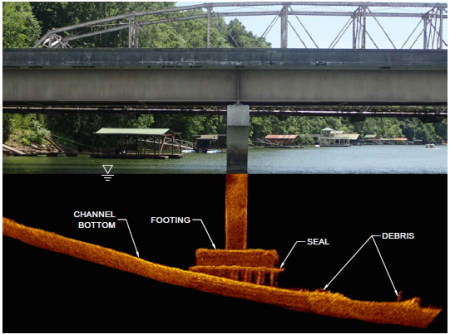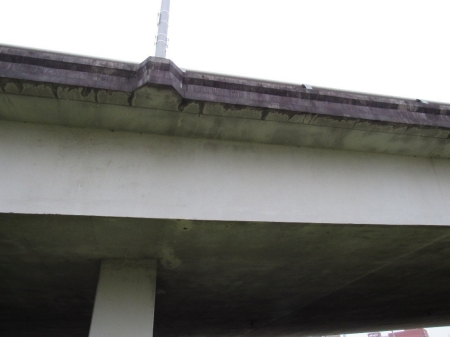Tennessee Bridge Facts
Frequently Asked Questions
Click on the question to reveal the answer in a dropdown box.
Under Federal law, TDOT is required to inspect all bridges that are over 20 feet long on public roads every 24 months. These inspections allow the state to gather information needed to prioritize repairs, determine the load capacity and weight limit postings if needed, and protect the safety of the public.
Generally, TDOT performs approximately 20,000 inspections (19,915 unique bridge sites) every two years, plus an additional 110 re-inspections for specific issues identified during routine inspections.
Bridge inspections are conducted by inspection teams throughout the state. The teams inspect 8,000+ state-maintained bridges and 11,000+ locally-maintained bridges (city/county). The only bridges not inspected are those maintained by the Federal government, such as National Park bridges or those which have been identified as private bridges.
All bridges are inspected every 24 months as required by Federal law, unless the condition of the bridge necessitates a re-inspection. Following each inspection, each bridge is rated to determine if more frequent inspections and/or repairs are needed.
Bridges are classified as Good, Fair, Poor, or Critical in accordance with the Pavement and Bridge Condition Performance Measure established by the Federal Highway Administration.
GOOD (G) – The bridge may have some minor problems, such as construction defects or minimal shrinkage cracks in concrete.
FAIR (F) – All primary structural elements are sound, but may have minor section loss, cracks, or undermining of the soil.
POOR (P) – Advanced section loss, deterioration, or undermining have seriously affected structural components.
CRITICAL (C) – Advanced deterioration of structural elements. Unless closely monitored, it may be necessary to close the bridge.
As of January 2017, classification for the National Bridge Inventory rating system has changed, including references to “structurally deficient” or “functionally obsolete” bridges, in accordance with the Federal Highway Administration’s Pavement and Bridge Condition Performance Measures final rule.
Beginning with 2018 archive data, the term “structurally deficient” is defined as a classification given to a bridge which has any component in Poor (P) or worse condition. The term “functionally obsolete” is no longer being used.
Bridge repairs are necessary to correct structural or functional deficiencies, vehicular collision damage, concrete or steel deterioration, scour problems, etc.
Tennessee is ranked 10th in the nation for total number of bridges with 19,915. Tennessee inspects all state- and locally-maintained bridges, whereas other states only inspect the state-maintained bridges. In Tennessee, there are 8,400 state-maintained bridges. The remainder are locally maintained.
TDOT works with engineering consulting firms to conduct underwater inspections, using trained divers and SONAR in deep water, and scour inspections. Shallow water bridge inspections are performed by state inspection teams using sounding rods and underwater cameras. Scour is the process whereby flowing water undermines the supporting soil of bridge foundations. This is a primary cause of bridge failures, especially in West Tennessee where soil conditions favor the formation of this type of problem.
Visibility is critical to bridge inspection. Nighttime does not provide enough light to visually inspect all aspects of a bridge, including defects, cracks, or damage. (see photo)
click image for larger view
In the photo above, there are hairline (diagonal) shear cracks about 6 feet to the right of the pier. Most cracks in concrete are less than 1/64” wide. In prestressed concrete and steel, cracks are much smaller. This type of structural component should be noted on inspection but would not be visible at night.
Additionally, nighttime poses a greater risk to inspection teams due to roadway and waterway traffic.
National Bridge Inspection Standards are identified in the Federal Aid Policy Guide under 23 CFR 650C. In summary, TDOT is required to inspect all bridges that are over 20 feet long on public roads every 24 months. The lead inspector at each bridge must meet certain experience and training requirements. Additionally, inventory and condition data for all bridges must be submitted to FHWA each year.

